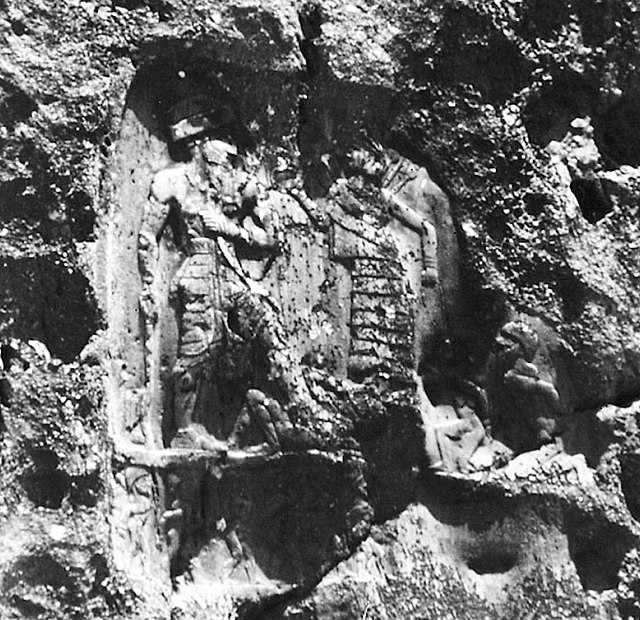The Anubanini petroglyph, also called Sar-e Pol-e Zohab II or Sarpol-i Zohab relief, is a rock relief from the Akkadian Empire period or the Isin-Larsa period and is located in Kermanshah Province, Iran. The rock relief is believed to belong to the Lullubi culture and is located 120 kilometers away from the north of Kermanshah, close to Sarpol-e Zahab. Lullubi reliefs are the earliest rock reliefs of Iran, later ones being the Elamite reliefs of Eshkaft-e Salman and Kul-e Farah.
Original relief.
Components of the relief (extracted): king Anubanini trampling a foe, goddess Ishtar, two groups of prisoners, and an inscription in Akkadian language.
Transcription
Photograph by Ernst Herzfeld
Lullubi, Lulubi, more commonly known as Lullu, were a group of Bronze Age tribes during the 3rd millennium BC, from a region known as Lulubum, now the Sharazor plain of the Zagros Mountains of modern-day Sulaymaniyah Governorate, Iraq. Lullubi was neighbour and sometimes ally with the Hurrian Simurrum kingdom. Frayne (1990) identified their city Lulubuna or Luluban with the region's modern town of Halabja.
The Victory Stele of Naram-Sin (circa 2250 BC), commemorating the victory of Akkadian Empire king Naram-Sin (standing left) over Lullubi mountain tribe and their king Satuni. Musée du Louvre.
Relief of the Lulubian Tardunni, known as the Darband-i Belula, the Darband-i Hurin or Sheikhan relief, Kurdistan, Iraq
Tablet of Shulgi, glorifies the King and his victories on the Lullubi people, Sulaymaniyah Museum, Iraq
Lullubi-ki ("Country of the Lullubi") on the Anubanini rock relief








